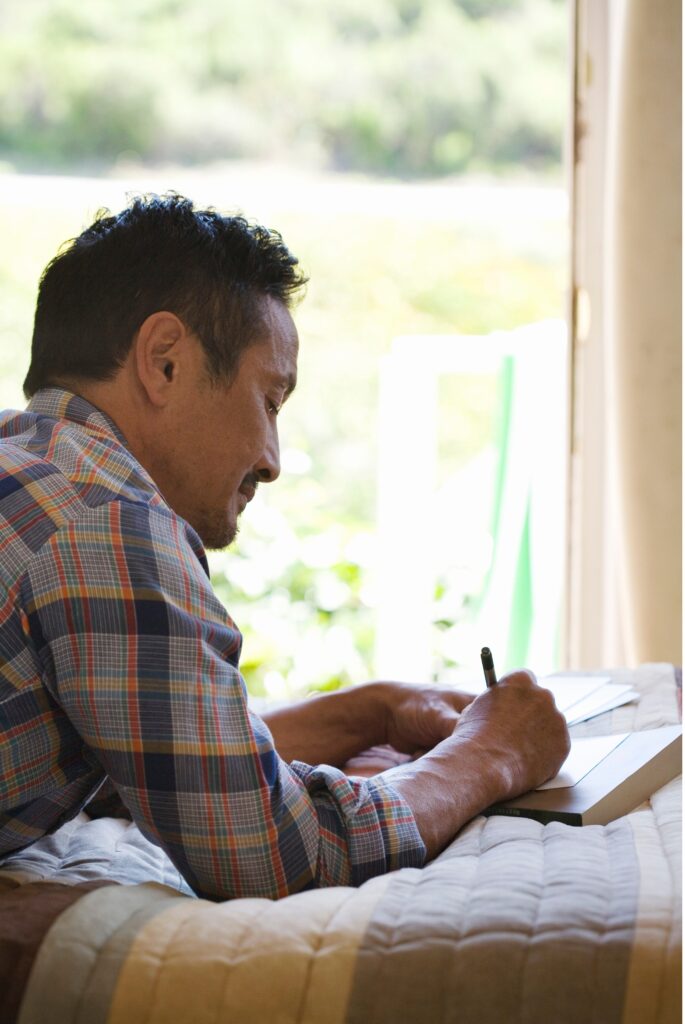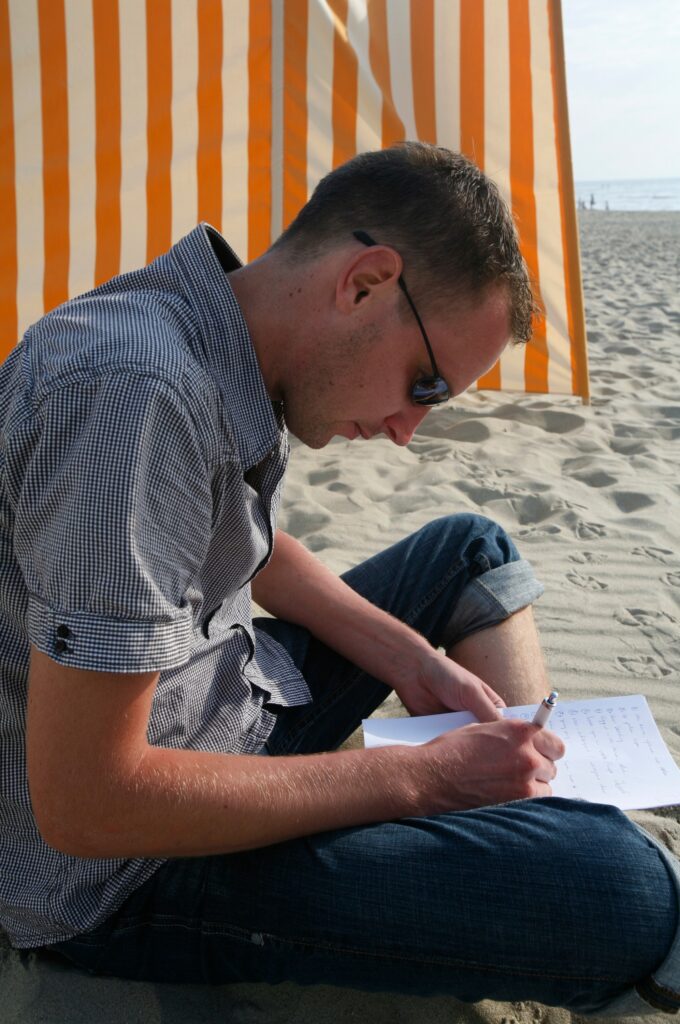Welcome to Saturday Sparks! This week, we’re exploring Creative Writing, a timeless form of expression that transforms thoughts, experiences, and imagination into something tangible. Whether it’s a journal entry, poem, story, or simple reflection, writing invites you to pause, listen inward, and shape your ideas into words that carry meaning. It’s where curiosity meets honesty, a space to capture moments, process emotions, and give form to what can’t always be said aloud.



From ancient storytelling and handwritten letters to digital journaling and modern poetry, creative writing has always helped people make sense of their world. It’s both deeply personal and universally human, connecting us through stories, memories, and shared understanding. Best of all, it doesn’t require perfect grammar or polished language, just a little curiosity and space to write.
What is Creative Writing
Creative writing is the practice of expressing ideas, emotions, and imagination through words in a way that feels personal and meaningful. Unlike academic or technical writing, which focuses on structure and precision, creative writing emphasizes voice, emotion, and storytelling. It gives writers the freedom to explore thoughts and experiences without rigid rules, an open space where ideas can take any shape they choose.
There are many forms of creative writing, from journals, poetry, and short stories to essays, screenplays, and novels.
Some writers enjoy fictional storytelling, while others prefer reflective or memoir-style writing drawn from real life. The key is not the format itself, but the act of expression, using language to create imagery, emotion, and connection that resonate with both writer and reader.
Even short exercises can reveal the heart of the craft. Freewriting, for example, involves setting a timer and writing continuously without stopping to edit or analyze.

It helps bypass hesitation and encourages fluid, honest expression. Prompt writing, responding to a specific word, question, or scenario, challenges writers to think in new ways and develop flexibility in their voice. These foundational techniques help build confidence, consistency, and a natural rhythm on the page.
The Benefits of Creative Writing
Creative writing supports mindfulness and emotional awareness. The act of slowing down to put thoughts into words helps quiet mental noise and bring attention to the present moment. As you focus on phrasing and detail, you become more aware of your emotions, thoughts, and surroundings, creating a gentle rhythm that encourages both reflection and calm.

It strengthens clarity and communication. Translating feelings or ideas into language sharpens how you think and express yourself. Over time, this skill carries over into everyday communication, helping you explain your needs, tell your story, or simply share what matters most with confidence and precision.

Creative writing is also suitable for all ages. Children can use it to explore imagination and build language skills, while adults often find it a calming and reflective outlet.
It grows with you over time, adapting to your interests, experiences, and goals, which makes it an activity that can be enjoyed for a lifetime.
Writing nurtures creativity and imagination. Through storytelling, poetry, or journaling, you learn to see possibilities where you had not before.
The page becomes a space to explore “what if,” build worlds, or uncover unexpected ideas that might have stayed hidden without words to bring them to life.

Creative writing provides flexibility and accessibility. It is something you can do anywhere, anytime, no matter the weather. Whether you are journaling on a quiet morning, jotting notes during a commute, or capturing a thought before bed, writing adapts to your schedule and mood with no special setup required.
It encourages self-discovery and perspective. When you write regularly, patterns begin to emerge, revealing recurring themes, emotions, or insights that show how you think, feel, and grow over time. This awareness can guide decision-making, spark healing, and offer valuable perspective on life’s challenges.
It offers a sense of progress and accomplishment. Finishing a page, poem, or paragraph provides tangible proof of effort and imagination made real. Each completed piece, no matter how small, builds confidence and fuels the motivation to keep creating.

Creative writing also fosters connection and community. While many writers begin in solitude, sharing your work, even a small piece, can open doors to understanding and support. Writing groups, workshops, and online communities provide spaces to exchange ideas, learn from one another, and see your experiences reflected through different voices. It is a quiet reminder that stories, in any form, connect us all.
Getting Started with Creative Writing
The best way to begin is simply to start writing. There is no right or wrong way to approach creative writing, and no special training is required. Gather a few simple tools such as a favorite pen, a sturdy notebook, or your laptop, whatever helps you feel comfortable putting thoughts into words.

If you are unsure where to begin, try short, focused exercises. Set a timer for ten minutes and write continuously without stopping to edit or judge what appears on the page.
This type of freewriting helps you loosen up, build confidence, and get past the pressure of finding the perfect words.
You can also experiment with writing prompts or short challenges. Prompts like “I remember when,” “Today I noticed,” or “If I could tell my younger self one thing” can spark ideas and help you practice expressing emotion through detail.
Create a comfortable space that supports focus and calm. Some people write best in the morning with a cup of coffee, while others prefer quiet evenings.
Good lighting and a supportive chair make a difference when you spend longer periods writing by hand or on a computer.
Once you have established a routine, explore different styles and subjects.
Try poetry, short stories, dialogue, or reflective journaling. Allow yourself to experiment with tone and perspective until you find what feels natural.
If inspiration is slow to come, read the work of others for a spark of motivation.

Sometimes a single sentence or image can help unlock your own ideas. The goal is not perfection but progress, and the more often you write, the easier it becomes to capture your thoughts clearly and confidently.
Resources to Enhance Your Creative Writing
One of the best parts of creative writing is how easy it is to find support, tools, and inspiration. Whether you prefer to learn independently or connect with others, there are many resources available to help you grow.

For inspiration and instruction, explore websites such as WritersDigest.com, TheWritePractice.com, and Reedsy.com. Each offers prompts, articles, and exercises that help you develop skill and consistency. You can also find free writing workshops or challenges through organizations like NaNoWriMo or community education programs.
If you enjoy learning from others, consider writing communities online or locally. Groups on Facebook, Meetup, or Reddit’s r/WritingPrompts offer places to share work, exchange feedback, and find motivation.
Local libraries or independent bookstores often host writer meetups, open mic nights, and journaling clubs where you can connect with other creative minds.
Books on writing can also be a steady source of encouragement. Titles such as On Writing by Stephen King, Bird by Bird by Anne Lamott, and Writing Down the Bones by Natalie Goldberg provide valuable insight into both the craft and the mindset of writing.
Reading regularly is also one of the best ways to strengthen your writing voice. Explore a variety of genres and authors, pay attention to what moves you, and study how writers use rhythm, dialogue, and imagery to draw readers in. The more you read, the more naturally your own writing style will develop.

You can find quality notebooks, pens, and journaling supplies at local bookstores, office supply shops, or online retailers. Digital writers may prefer programs such as Google Docs, Scrivener, or Notion for organizing drafts and ideas.
Tips for Finding Your Flow in Creative Writing
Creative writing is most rewarding when you allow it to fit naturally into your life. A few simple habits can help you stay consistent, inspired, and confident in your writing practice.

Begin with realistic expectations. Every writer experiences moments of clarity and moments of frustration.
Treat writing as a process of discovery rather than a performance and allow yourself the freedom to explore without judgment.
Create a comfortable writing routine. Choose a time of day that feels calm and unhurried, even if it is only ten minutes. Consistency matters more than duration. A familiar space, soft lighting, and minimal distractions make it easier to focus.
Protect your privacy when needed. If you write about personal topics, store your work in a way that feels safe, whether it is a password-protected file or a closed journal. Feeling secure allows you to write honestly and without hesitation.
Keep your tools ready. Having a notebook, journal, or open document nearby makes it simple to capture thoughts as they arise.
Inspiration often comes at unexpected times and writing them down immediately helps keep creative ideas from slipping away.
Take breaks and rest your eyes and hands. Writing for long periods, especially on a screen, can cause fatigue. Short pauses to stretch or look away from the page keep your mind fresh and your body comfortable.
Avoid over-editing too early. Let your first draft be rough. Editing as you go can interrupt flow and limit creative freedom.
Once you have written freely, you can return later with fresh perspective to refine your work.

Finally, remember why you write. Whether for clarity, imagination, or joy, returning to your purpose keeps the practice meaningful. Progress may come slowly, but each session builds skill and confidence over time.
Final Thoughts
Creative writing is more than a hobby; it is a practice in awareness, patience, and expression. Every blank page offers a chance to pause, think, and translate what you see or feel into something tangible. The process teaches focus, builds discipline, and allows you to understand your own thoughts more clearly.



Writing also reminds us that creativity does not have to be complicated. A simple notebook and a few quiet minutes are enough to spark ideas and bring them to life. There is no finish line or final version, only progress and the satisfaction of seeing your words take shape.
Each word you write becomes a thread, weaving together creativity, mindfulness, and self-discovery one sentence at a time.
Do you enjoy creative writing, or is it something you have always wanted to try? Share your thoughts or favorite ways to write in the comments below.
Leave a Reply